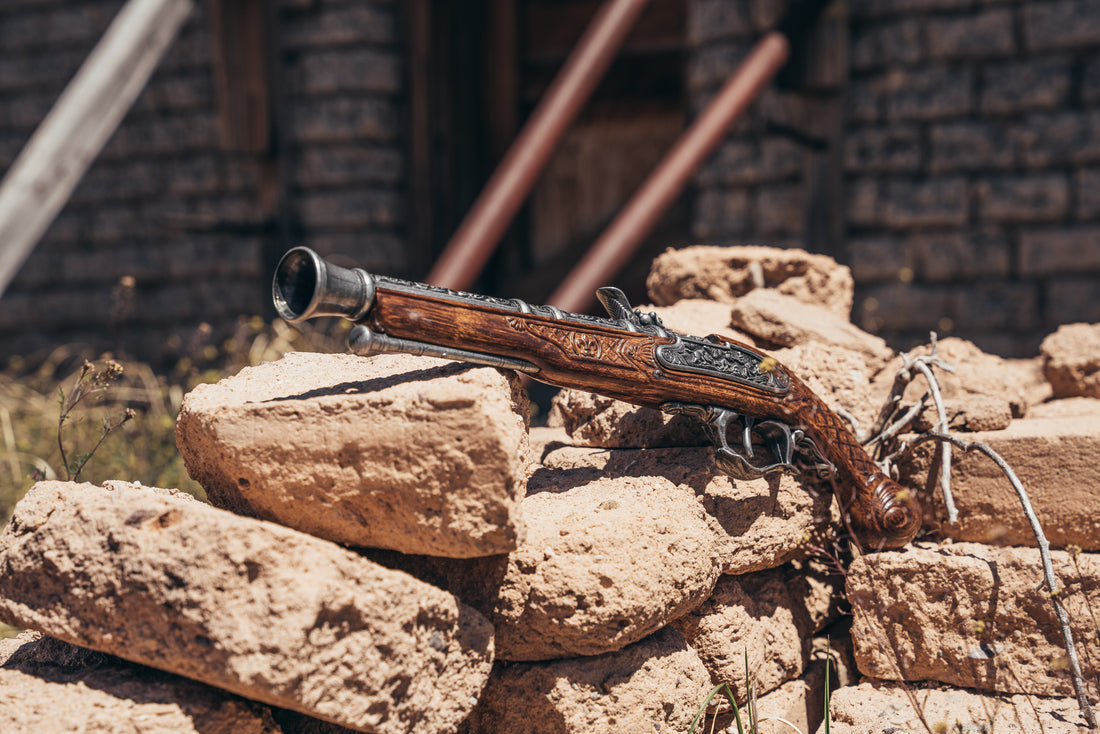The flintlock firearm stands as a pivotal point in the history of firearms technology, marking the transition from early matchlock and wheellock mechanisms to the more modern percussion and cartridge-based systems.
The flintlock firearm, a revolutionary invention in its time, played a significant role in the progression of firearms technology. It replaced earlier mechanisms, such as the matchlock and wheellock, offering improved reliability, speed, and accuracy.
The first flintlock firearms appeared in Europe during the early 17th century, with the earliest known examples dating back to the late 16th century. The flintlock mechanism represented a significant leap forward in firearm technology. It consisted of a lock mechanism that used a piece of flint to strike a steel frizzen, creating sparks to ignite the priming powder in the flash pan. This innovative design made flintlock firearms more reliable and easier to use than their predecessors.
The Musket Era
The 17th and 18th centuries saw the widespread adoption of flintlock muskets by military forces across Europe and the Americas. Muskets were smooth-bore firearms that fired round lead balls, making them effective at short to medium ranges. The flintlock mechanism allowed for faster and more reliable ignition, which was crucial on the battlefield.
Rifling and Improved Accuracy
During the late 18th century, rifling – adding spiral grooves inside the barrel – was applied to flintlock firearms. This innovation significantly improved accuracy and range. Rifled flintlock rifles became popular among hunters and marksmen, and their influence on military tactics was evident in the American Revolutionary War and the Napoleonic Wars. Both sides utilized flintlock muskets and rifles. Their impact on warfare was profound, as they influenced battlefield tactics, infantry formations, and the importance of skilled shooters.
Challenges and Limitations
Despite their many advantages, flintlock firearms had limitations. They were susceptible to wet weather, as moisture could dampen the priming powder and prevent ignition. Additionally, the flintlock mechanism required a skilled user to maintain and operate effectively, limiting their use by less-trained soldiers.
The Transition to Percussion Systems
The 19th century witnessed the gradual transition from flintlock firearms to percussion systems. Percussion caps, invented in the early 1800s, provided a more reliable ignition source than flint and steel. This innovation led to the development of percussion locks, making flintlocks obsolete in military use.
The evolution of flintlock firearms represents a crucial phase in the history of firearms technology.
From their invention in the early 17th century to their gradual replacement by percussion systems in the 19th century, flintlock firearms played a vital role in warfare, hunting, and civilian life. They introduced significant improvements in reliability, accuracy, and firing speed, leaving a lasting impact on the development of firearms technology. Today, flintlock firearms are treasured artifacts of history, reminding us of a bygone era when sparks ignited the course of warfare and human progress.
If you are a history buff, a serious collector, or just looking to own a piece of history, shop Armory.




